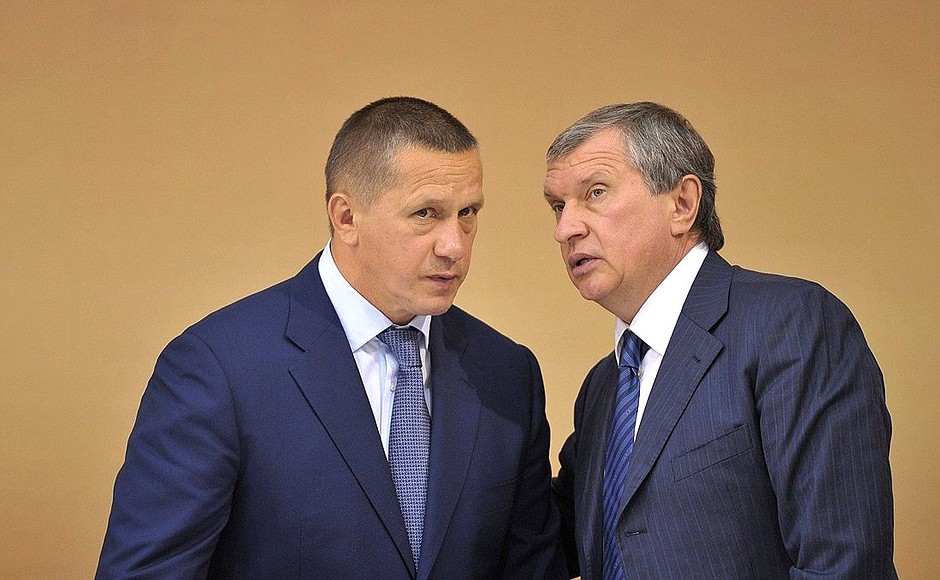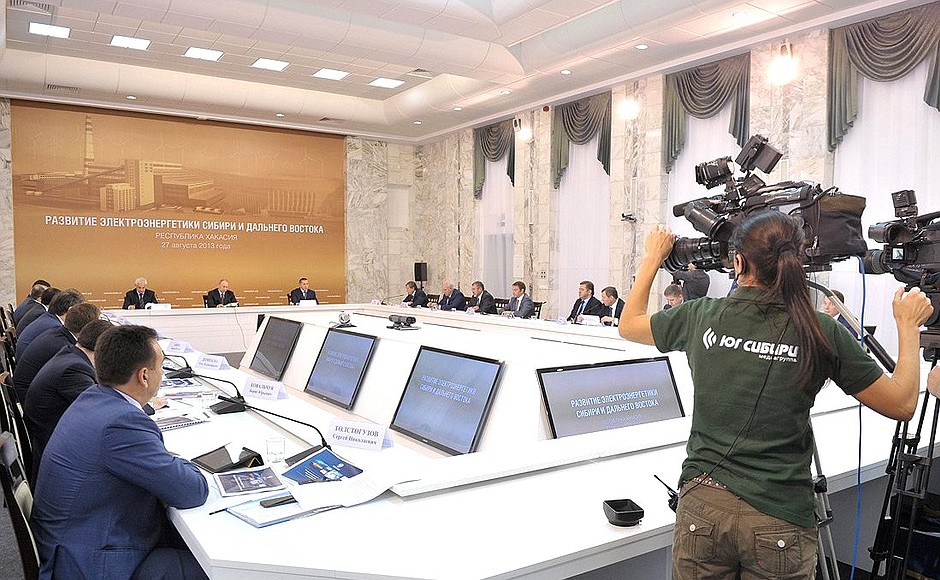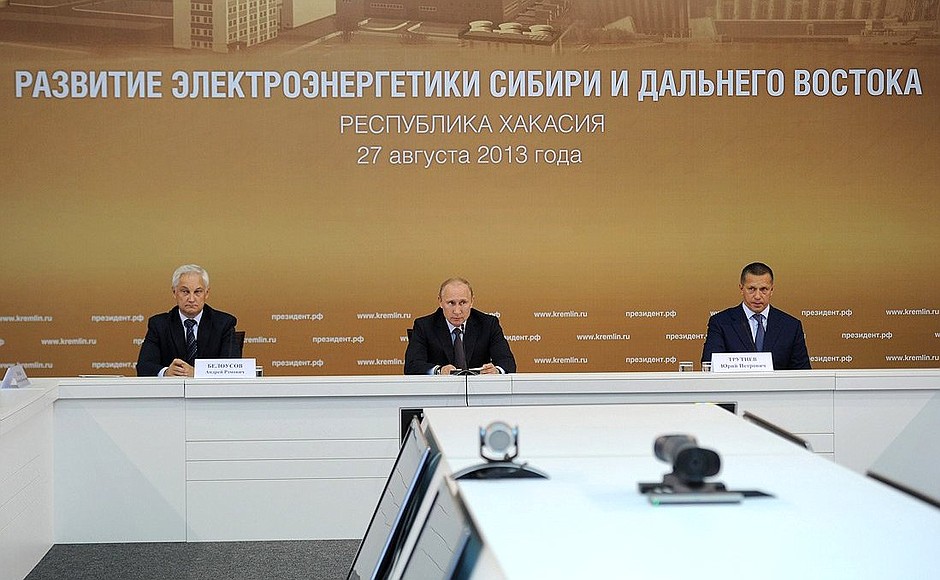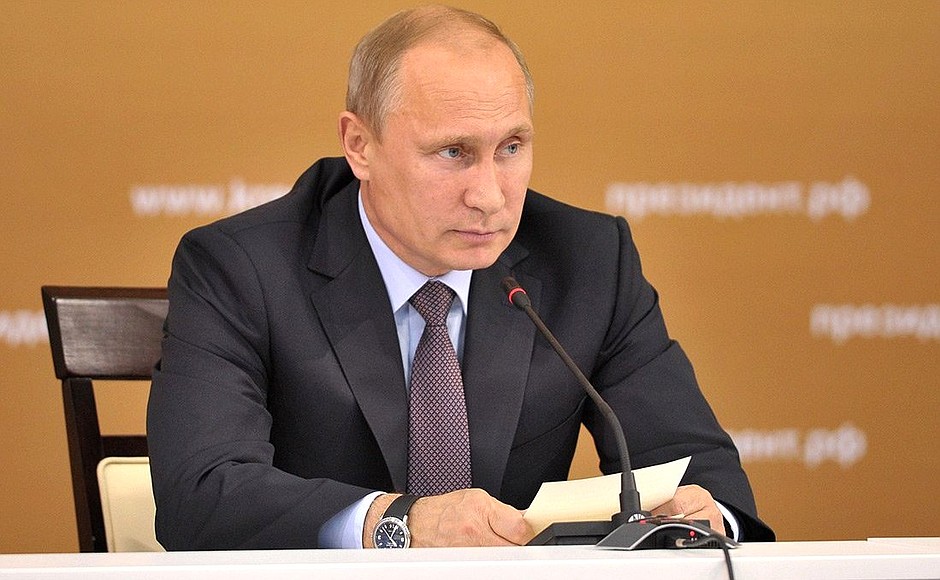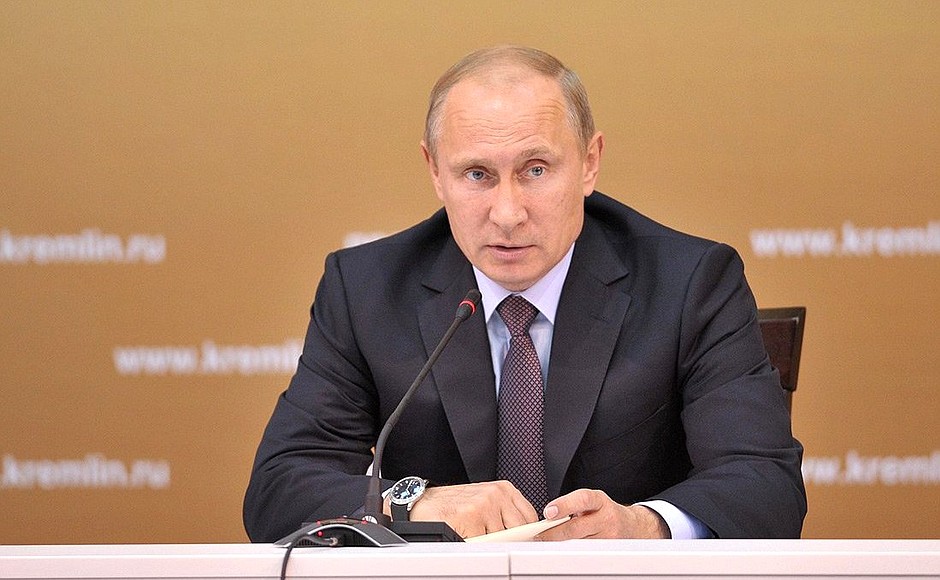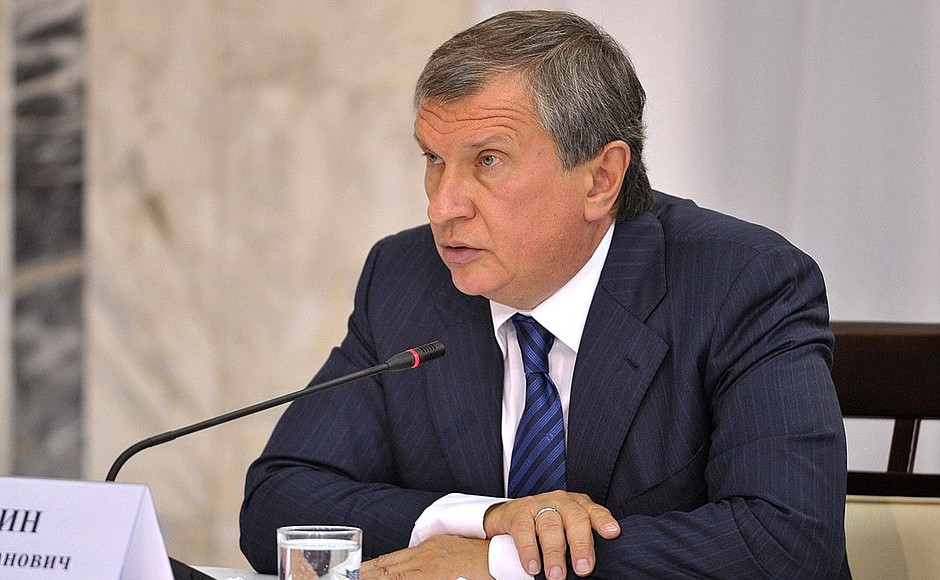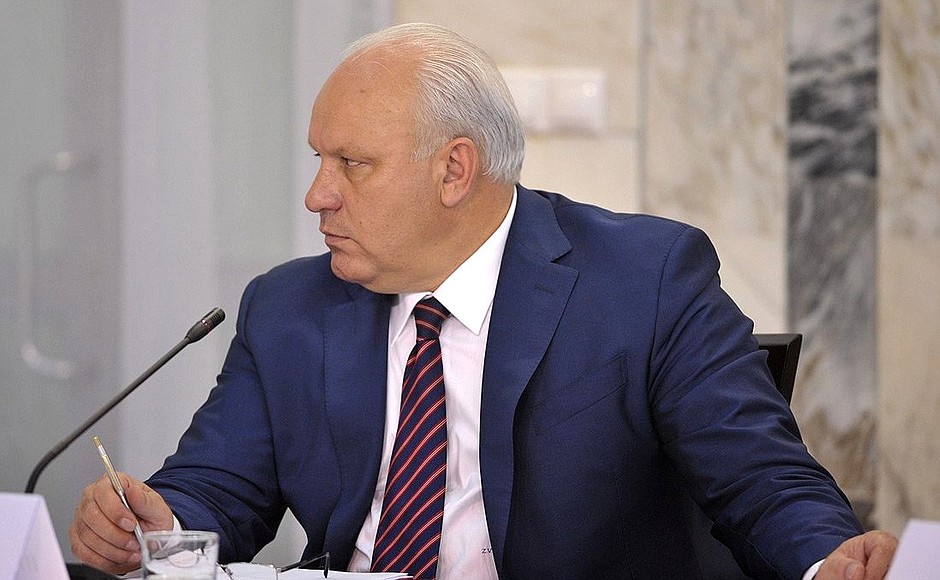President of Russia Vladimir Putin: Good afternoon, colleagues,
We are meeting to discuss developing the energy sector in Siberia and the Far East. So our agenda is both important and vast, but naturally we must start with a particularly topical and pressing issue.
When talking about developing the electricity sector in Siberia and the Far East, we must begin with the current situation there, where there are unprecedented floods; we need to review the situation and analyse it. I would like to hear the heads of relevant agencies assess the situation in the energy sector, the electricity sector and, of course, first and foremost in the hydropower sector.
We need to do everything to repair damaged facilities as quickly as possible. Thank goodness no serious damage has occurred. However, damages exist and they require additional attention from our part, as well as efforts on the part of various agencies and companies. We must do everything to ensure that power supplies are restored, so that people can return to living normal lives as soon as possible.
Damaged energy installations – let me repeat that there are a few – must be repaired as quickly as possible. I would like to draw everyone’s attention to this fact. Particular attention should be paid to ensuring the safe, standard operation of hydrotechnical facilities – we have already talked about this many times at previous meetings. Naturally, I am referring to those located in areas with difficult, flood-related conditions and especially the biggest such facilities: the Zeya and Bureyskaya hydropower stations. Today I would like to hear detailed reports about the current situation there.
And along with this I would like to draw your attention to the following: if damaged facilities were built in violation of town planning rules, in areas susceptible to flooding, the responsibility must be borne by the authorities behind such decisions. And of course the developers themselves knew exactly where they were building, and they should not shirk their responsibilities either.
It is already clear that we need to develop and implement a package of reforms and decisions that are systemic in nature. Among other things, they should provide for creating a new system to regulate the entire region’s water resources. They should also provide for building, when appropriate, new hydropower plants able to take on large amounts of water, for implementing a series of protective measures, for clean-up and relief efforts, and assistance to victims.
We must think about, and I would ask the Government to make proposals about establishing a governmental commission to coordinate activities related to monitoring the water situation at facilities in the Far East, as well as preventing floods and mitigating their effects in the region. I would ask you to present concrete proposals at our upcoming meeting in Khabarovsk.
Colleagues,
As I have already said, today we will discuss the situation in the electricity sector in Siberia and the Far East. We shall see what specific long-term problems and tasks there are, and which require immediate attention. I will note at once that we have managed to establish a solid base for electricity production in the eastern part of our country over the past few years. Thanks to the introduction of new facilities and the modernisation of existing ones, the capacity of Siberia’s integrated power system and that of the Far East’s energy areas increased to 62.5 gigawatts. Last year, the region’s power plants generated a record 247 billion kilowatt-hours.
What do I want to highlight? The hydropower industry is steadily growing. We are here at Sayano-Shushenskaya Hydropower Station. After the accident [in 2009], the station was not only repaired, but actually got a new lease on life. The replacement of all hydropower units is proceeding according to plan.
In general, the pace set in the energy system in Siberia and the Far East is very good. At the same time, several imbalances relating to its operation have begun to appear. Today, there are power reserves in Russia’s eastern regions that can facilitate the long-term economic growth and social development of Siberia and the Far East. Along with this, some regions remain isolated from an integrated power supply system, and therefore cannot fully develop their industrial base or social sphere. In this context, we must carefully consider how to integrate Far Eastern networks with Siberian ones.
Another large-scale project involves establishing energy bridges, direct current transmission lines between regions that generate excess power and major industrial centres. Of course, we need to find new opportunities for selling electricity, including by developing promising export opportunities. In general, we must guarantee the capacities of existing power plants and those under construction.
I will highlight another problem that is particularly relevant in the region, that of so-called remote consumers. At times, we have had to extend and service many kilometres of power lines to provide power to even one such facility. Hence the high, ineffective costs, and technological risks, given that there is rarely a backup power source in such areas. For that reason today we must discuss the development prospects for locally generating power in Russia’s eastern regions. We must do this by assessing the effectiveness of various options for constructing installations for local power generation as opposed to implementing network solutions, which are often done out of necessity.
Another issue that I think we need to touch on is the state of network infrastructure. We must acknowledge that as of yet no major changes for the better have taken place in the Siberian or Far Eastern regions. I well remember the period of abnormally cold weather here, when colleagues expended considerable efforts to ensure energy supplies in the region during an emergency period. Thank goodness that you were able to do this then, and you worked quite well. But at the time we agreed that we needed to improve the entire system’s reliability many times over. To do this requires specific measures. Suffice to say that just RAO Energy System of East has seen a wear rate of more than 70 percent on their electricity and heating networks. Let me remind you that the relevant instructions, as I already said (I just mentioned one of them), were given three times. Today I would like to hear what is being done to this effect.
Let me return to Sayano-Shushenskaya Hydropower Station once again. Four years ago we made a decision here to establish a governmental commission for clean-up and relief efforts after the accident. Let’s start with this. I would ask the commission’s chairman, who still is [Rosneft CEO] Mr [Igor] Sechin, to report on what progress has been made in the intervening period.
Please, let’s get started.
<…>
